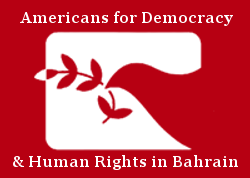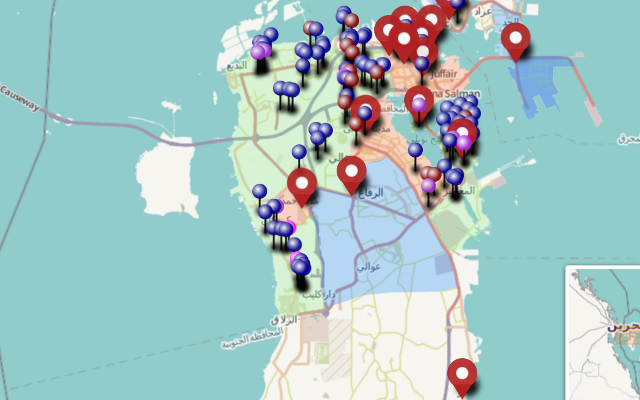Skip to the map here.
On February 14, 2011, thousands of Bahrainis participated in a “Day of Rage” in Manama, inspired by the popular upheavals in Egypt and Tunisia. They hoped that peaceful protests could change the political landscape of the country. By the end of the night, 21-year old Ali Mushaima was dead. This marked the beginning of a several year period of government suppression of dissent. Three days after the killing of Ali Mushaima, on February 17, protesters marched to the Pearl Roundabout in Manama. The police were waiting for them, and opened fire. A day later, activists began their march from the cemetery where Ali Mushaima is buried. Again, the police met them with live ammunition, killing four people in what would come to be known as “Bloody Thursday.” That was the highest number killed in one day, until a month later, when security forces killed six people on March 16.
Since the “Day of Rage” and Ali Mushaima’s death, human rights organizations have documented the deaths of 85 people at the hands of security forces between 2011 and 2014. 65 of these deaths occurred in predominantly Shia areas of Bahrain. 70 people were killed in the first two years, in 2011 and 2012. Security forces killed men, women, children, and the elderly. The youngest victim was Yahya Yousif Ahmed; he was 45 days-old when he died on March 5, 2012. The oldest victim was Habib Ebrahim, 88 years-old, who he was killed on January 12, 2013.
Utilizing data and testimony, Americans for Democracy & Human Rights in Bahrain (ADHRB), the Bahrain Institute for Rights and Democracy (BIRD), the Bahrain Center for Human Rights (BCHR), the European Center for Democracy and Human Rights (ECDHR), and Justice Human Rights Organization (JHRO) have assembled an interactive chart that illustrates the ongoing human rights abuses in Bahrain, displaying in visual form the spread of extra-judicial killings of protesters, the arrests of activists, bloggers, journalists, and photographers, and extrajudicial killing of government opponents. The map describes a country in crisis, where torture, abuse, and killing prevail as a norm in the government’s campaign against human rights and democracy.
Find the map here.





